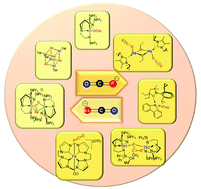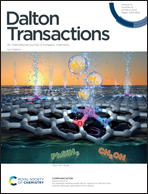Recent advances in the chemistry of the phosphaethynolate and arsaethynolate anions
Abstract
Over the past decade, the reactivity of 2-phosphaethynolate (OCP−), a heavier analogue of the cyanate anion, has been the subject of momentous interest in the field of modern organometallic chemistry. It is used as a precursor to novel phosphorus-containing heterocycles and as a ligand in decarbonylative processes, serving as a synthetic equivalent of a phosphinidene derivative. This perspective aims to describe advances in the reactivities of phosphaethynolate and arsaethynolate anions (OCE−; E = P, As) with main-group element, transition metal, and f-block metal scaffolds. Further, the unique structures and bonding properties are discussed based on spectroscopic and theoretical studies.

- This article is part of the themed collection: 2022 Frontier and Perspective articles


 Please wait while we load your content...
Please wait while we load your content...